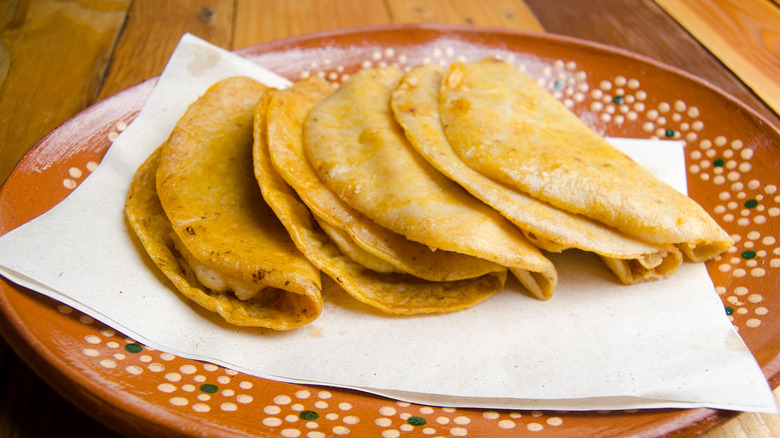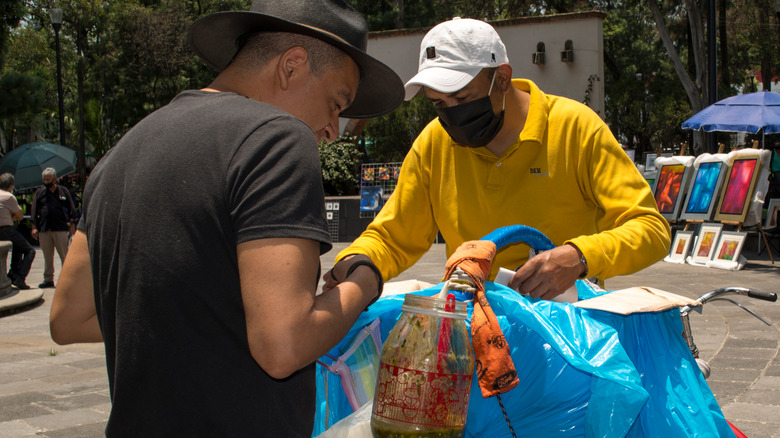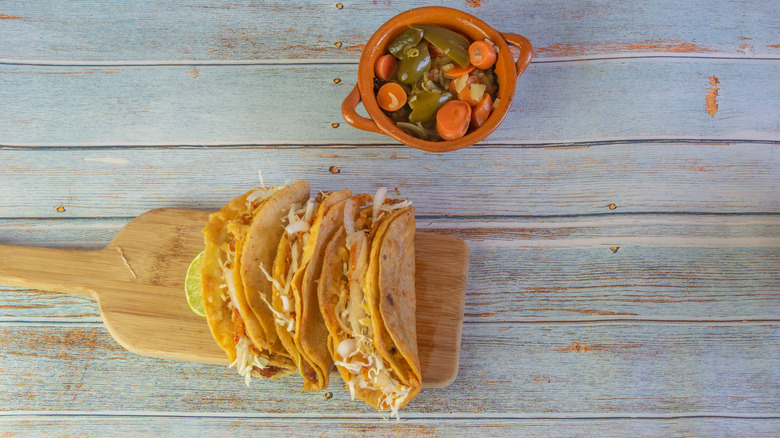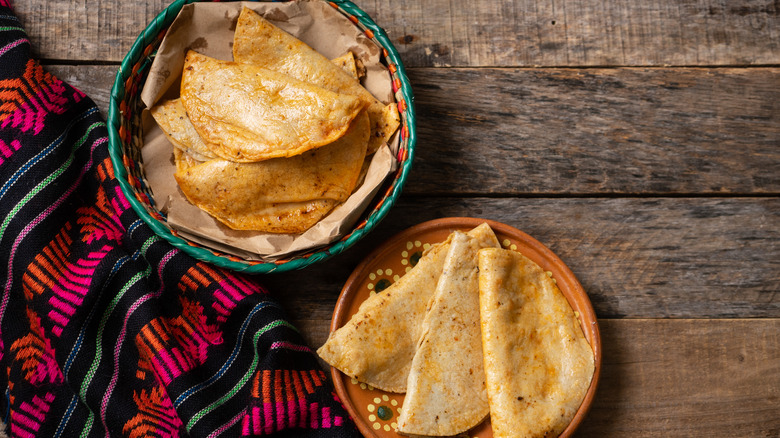Tacos Al Vapor: What Makes This Delectable Street Food Unique
Mexico's rich gastronomy encompasses a variety of influences across centuries of culinary tradition. Take tortillas — one of the most fundamental components of Mesoamerican cuisine. According to Chapala, the thin bread dates back to 10,000 BCE, right around the domestication of corn. Thousands of years later, Lebanese immigrants arrived and introduced a method of cooking meats on a vertical spit. In combining the two culinary techniques, tacos al pastor were born.
Through centuries of cultural exchange, the nation's cuisine boasts an expansive diversity. There's no better place to sample it all than in bustling Mexico City. In the nation's capital, Enrique Olvera's fine-dining sushi-inspired taco omakase (via New York Times) coexists with varieties of street food from all around Mexico. A specific kind, tacos al vapor, meanders its way through the streets in baskets attached to bicycles. Spotted by the accompanying containers of vibrant green salsa, these tacos are prepared with a distinct process, per Taste Atlas. Let's dive into what makes them so unique.
What are tacos al vapor?
Rather than griddled or fried like most tacos, taco al vapor involve steamed tortillas stuffed with precooked fillings. Layered in a basket above water, pre-frying the tortilla keeps the rows of tacos from falling apart, explains MasterClass. Alternatively called tacos de canasta, or tacos of the basket, these snacks are filled with refried beans, chicharrón, shredded chicken, and more, notes Eat Your World.
The dish's preparation is a fine balance of keeping the tacos delectably moist but not mushy. Fillings are cooked to a drier consistency so that the tacos keep well in the steamer. Chili oil is often added for flavor, and plenty of salsa is served alongside for extra moisture and taste, per Serious Eats.
As described by Matador Network, Mexico City vendors line baskets with blue plastic, brown paper, and cloth for insulation. The dish is typically consumed in the morning before the vendors sell out of their daily supply.
History of tacos al vapor
The origins of tacos al vapor have been historically attributed to San Vicente Xiloxochitla, a village a few hours away in the Tlaxcala state. Over the 20th century, workers from all around Mexico came to the capital, bringing taco-making techniques with them. Many journeyed via buses and bicycles, carrying pre-prepped bites to sell in the city before returning to their village. In combination with the crafts of Santa Apolonia Teacalco, a nearby basket weaving town, the San Vicente village likely created the portable style in such a capital commute. However, it's difficult to know the taco's exact origins — it's a food defined by movement, explains Saveur.
The hearty fare also carries working-class associations, often interlinked with Guanajuato and Hidalgo mining regions. The cloth-wrapped food would keep hot for hours, suitable for long days in the mine. Only after the Mexican Revolution steamed tacos reached ubiquity with all social classes, reports Yucatan Times.
How to prepare tacos al vapor
Cooking tacos al vapor involves some finesse due to the delicate textures of the dish. There's a fine line between a mushy, fallen-apart taco and renditions that are too dry. For L.A. Taco, father-son chefs Mota and Abraham of Tortas Ahogadas El Rey note that the filling needs a smooth consistency. Preparing their potato stuffing, they boil and loosely mash the spuds, adding enough oil until achieving a spreadable texture. They then spoon the mixture onto a tortilla, which is folded in half. The tacos must be fitted snugly into the steaming vessel, with level distribution to ensure consistency.
Most home cooks use a tied-up plastic bag wrapped in warm towels to steam. At the beginning of the process, chili oil is drizzled in to add more flavor. When densely packed and well insulated, tacos al vapor stay warm for five to six hours (via Spruce Eats). Excellent for parties and large groups, these tacos are easy to prep in large quantities. And you don't have to limit it to one flavor per basket — experiment with both vegetarian and meat-filled varieties.



